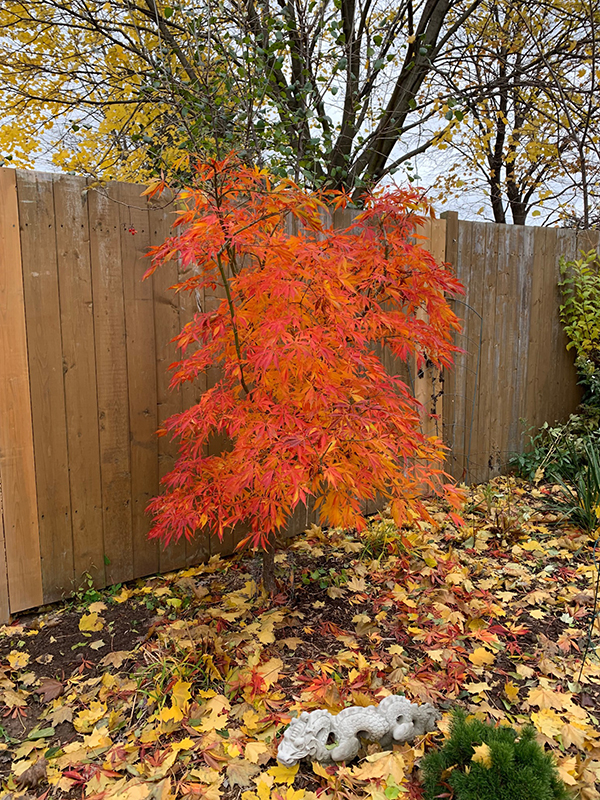Elegans Japanese Maple
Acer palmatum 'Elegans'
Height: 10 feet
Spread: 8 feet
Sunlight:
![]()
![]()
Hardiness Zone: 6a
Description:
The leaves of this spectacular, compact accent tree emerge soft green with salmon tones, turning mid-green in summer; autumn brings a colorful show of gold, orange, and red; a very graceful, upright, open habit that is perfect for small gardens
Ornamental Features
Elegans Japanese Maple is primarily valued in the landscape or garden for its ornamental upright and spreading habit of growth. It has attractive green deciduous foliage which emerges light green in spring. The small serrated pointy palmate leaves are highly ornamental and turn outstanding shades of gold, orange and red in the fall.
Landscape Attributes
Elegans Japanese Maple is an open deciduous tree with an upright spreading habit of growth. Its relatively fine texture sets it apart from other landscape plants with less refined foliage.
This is a relatively low maintenance tree, and should only be pruned in summer after the leaves have fully developed, as it may 'bleed' sap if pruned in late winter or early spring. It has no significant negative characteristics.
Elegans Japanese Maple is recommended for the following landscape applications;
- Accent
- Mass Planting
- Hedges/Screening
- General Garden Use
Planting & Growing
Elegans Japanese Maple will grow to be about 10 feet tall at maturity, with a spread of 8 feet. It has a low canopy with a typical clearance of 1 foot from the ground, and is suitable for planting under power lines. It grows at a slow rate, and under ideal conditions can be expected to live for 60 years or more.
This tree does best in full sun to partial shade. You may want to keep it away from hot, dry locations that receive direct afternoon sun or which get reflected sunlight, such as against the south side of a white wall. It prefers to grow in average to moist conditions, and shouldn't be allowed to dry out. This plant will benefit from an application of bonemeal and/or mycorrhizal fertilizer at the time of planting. It is not particular as to soil pH, but grows best in rich soils. It is somewhat tolerant of urban pollution, and will benefit from being planted in a relatively sheltered location. Consider applying a thick mulch around the root zone in winter to protect it in exposed locations or colder microclimates. This is a selected variety of a species not originally from North America.


